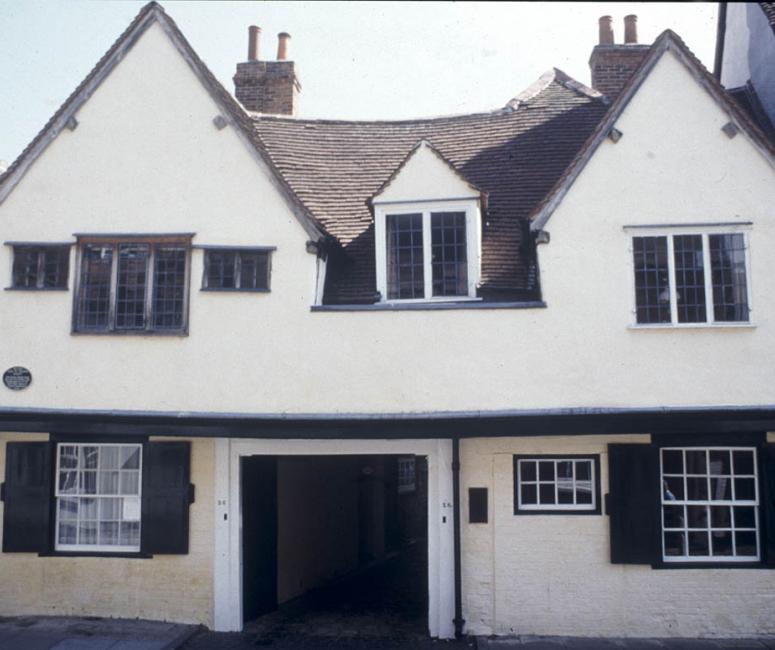From condemned slum to fully restored - Abingdon’s oldest house contains a wealth of hidden treasures and stunning wall paintings.
The history of Abingdon's oldest house
26 & 26 a East St. Helen Street is Abingdon’s oldest house and Oxford Preservation Trust’s too.... The property was left to Oxford Preservation Trust by Miss Baker in 1991. The building dates from c.1430 and contains vibrant 16th-century wall paintings which cover the walls on the first floor, and a gallery lit by a timber window with its original intricate gothic tracery. We know that the two houses were once a single house and where the covered coach entrance has been knocked through, is where there was once an open fire – this house dates back to before the invention of the fireplace. Smoke blackening on the roof timbers gives us the evidence we need, and it is here that a child’s doublet was found, pushed up into the rafters – was it to ward off evil spirits, as was once the custom? The Oxford Archaeology Unit wrote a more detailed report on the nearly 600 years of history of this special house. Download it at the bottom of this page.
Restorations through the ages
The house was acquired by the noted Abingdon historian Agnes Baker in about 1946, and was bequeathed to her sister Mary Baker in 1955. Although when purchased it was 'a condemned slum', it was carefully restored by Tony Lloyd of Curtis Green and (after 1949) by Walter Godfrey. In 2020, extensive work was undertaken on the gallery window which dates from c1430, after a survey uncovered considerable deterioration. What began as minor repairs to the window itself developed into an intricate project including major repairs to both the roof and the frame. You can download a report of the detailed restoration work of the medieval windows at the bottom of this page.
Doublet
Investigations by Dina Eastop and the Textile Conservation Centre (formerly a department of the University of Southampton) in early 2000s have revealed the rarity of this as an example of a child’s ‘ordinary’ garment dating from the early seventeenth century. Analysis has shown that it is fashioned from brown wool dyed blue, and a reconstruction has been made which can be seen at the house. The doublet may have been concealed deliberately, although other schools of thought say that it may simply have been discarded, as a large square section has been cut out of it. You can read more about the doublet at the report at the bottom of this page.



